Chicago Hope
The 2024 edition of the ASHRAE Winter Conference, held from January 20 to 24, in Chicago, in the United States, proved to be a dynamic convergence of HVAC&R industry leaders, experts and professionals with a central focus on critical topics such as decarbonisation, climate change and Artificial Intelligence.
The Conference saw a strong gathering of industry professionals with nearly 3,800 people registering to attend, and including 458 committee meetings, 125 technical sessions, and numerous social events and activities. In addition, the AHR Expo (International Air-Conditioning, Heating, Refrigerating Exposition), spanning an 527,000 net square feet of exhibit space, at McCormick Place, hosted more than 1,860 exhibitors, including 344 international exhibitors, unveiling HVAC&R technologies, products and services. An estimated 50,000 people attended the Expo over three days.
The Expo marked a week of learning, reconnecting, perusing and demo-ing HVACR products in the marketplace. Topics that came up for discussion at the Expo included decarbonisation – from equipment on the floor to discussions in education programming – refrigerant regulation updates, the heat pump resurgence and the unveiling of many new products that are shaping the path forward for HVACR.
Mark Stevens, Show Manager, AHR Expo, said: “The industry showed up for business in Chicago. Throughout the year, we have followed discussions regarding regulation rollouts, decarbonisation trends and various other tracks about how we conduct business as an industry. It was evident in the halls that the professionals in attendance were primed to create solutions and drive the business forward.”
According to ASHRAE, the top three most-attended Winter Conference sessions were:
- Seminar 13: Thermal Energy Storage – A Critical Strategy for Decarbonisation
- Seminar 19: LIVESTREAM – Beneficial Electrification
- Seminar 8: The Logical Way to Tap into Decarbonisation – Hydronic District Energy Systems
One of the highlights of the Conference were theupdates shared by Ginger Scoggins, President 2023-24, ASHRAE, about the Society's current theme, “Challenge Accepted: Tackling the Climate Crisis”, during her State of the Society Address. Scoggins said: “We built on a declaration to be a collective body of problem-solvers in tackling the global climate crisis. ASHRAE regions and chapters showed an exemplary commitment to understanding how climate change affects building planning, design, construction and operation. Still, they volunteered time and expertise to develop resources to support actionable, wide-scale building decarbonisation practices. Once we recognise the challenge, we will find ways to accept responsibility for making changes in our activities to make a difference. Big or small, all changes help our efforts, and we appreciate them.” Scoggins also spoke on the expanding interest in ASHRAE's decarbonisation conferences and support from the U.S. Federal Government for ASHRAE's recently published updated energy-efficiency standard for existing buildings, Standard 100.

In one of the other sessions, Dr Carolyn Snyder, Deputy Assistant Secretary for Buildings and Industry, for the U.S. Department of Energy, one of the invitees to the ASHRAE President's Luncheon, spoke on building decarbonisation leadership. Dr Snyder said: "I want to share my deep gratitude and appreciation from the DoE for all of the work that ASHRAE does and for your longstanding close partnership with our agency. Last November, our Deputy Secretary announced our new National Building Decarbonisation Strategy for the United States. We need to prioritise and centre around equity, affordability and resilience – all key themes that we see throughout this conference and ares where you have been leading for decades. It will require energy efficiency gains estimated at 35% by 2035 and 50% by 2050. Despite all the massive energy efficiency savings we have to date in our country, there's so much more that we need to do to achieve these targets. It is as if we wrote this blueprint looking at your Conference agenda for this week. You are already leaders across those topics. What you're doing here in your organisation is making a real impact on our country today, but more importantly, it is making an immense impact on our buildings, our communities and our homes for decades to come and for our children and grandchildren."
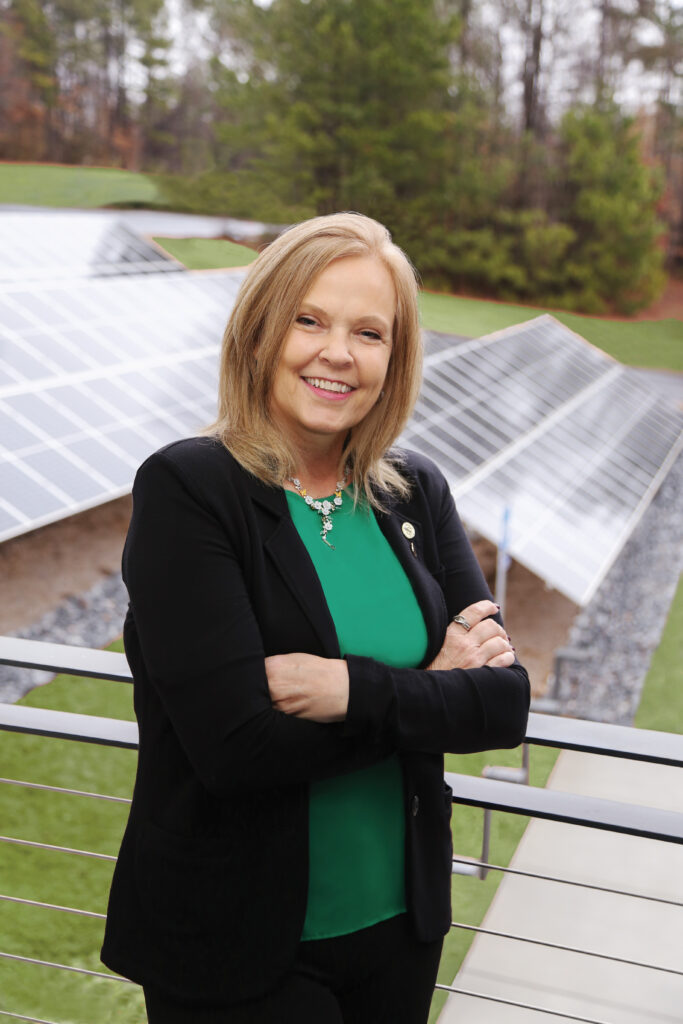
During the Conference, Scoggins announced the winners of the 2023 Decarbonisation Challenge, a grant programme to assist ASHRAE chapters in implementing decarbonisation projects in their communities. According to ASHRAE, 43 applications were submitted, and nine chapters will receive grants ranging between USD 2,000 and USD 10,000 for a total of USD 65,850, with additional matching funds from partnering organisations of the selected projects. ASHRAE underlined that the projected carbon savings will be 2.3 million kilograms of CO2 over the life cycles of the selected projects based on submitted calculations. Furthermore, the Society said that in line with its commitment to solving the technical challenges of building decarbonisation, the Board of Directors approved the transition of the ASHRAE Task Force for Building Decarbonisation from an ad hoc committee (TFBD) to the permanent Centre of Excellence for Building Decarbonisation.
In addition, the Society also delved into its collaborative efforts with Empower, the UAE-based District Cooling utility provider. During the conference, the Society said it signed a Memorandum of Understanding with Empower to develop a unified and globally approved District Cooling standard. The Society also signed a new agreement with OzonAction, under the United Nations Environment Programme (UNEP) for a 2024-2025 Work Plan, themed "Refrigerant Management for Climate Protection and Energy Efficiency in Developing Economies". According to ASHRAE, the plan emphasises making tools and programmes for sound management of refrigerants available and accessible to stakeholders in developing countries.
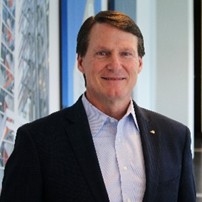
For his part, Jeff Littleton, Executive Vice President and Secretary, ASHRAE, provided updates on the Society's ongoing initiatives, highlighting its 130 years of service to the built environment. Littleton said: "In the year 2150, 130 years into the future, how will ASHRAE members judge our Society's work today? Will this decade be the tipping point for building decarbonisation? Will buildings truly protect occupants from indoor and outdoor health threats? In 2150, will ASHRAE's vision of a healthy and sustainable built environment for all be realised? I believe the answer is a resounding 'yes'. We have the talent, we have the wisdom, we have the passion. In 2150, ASHRAE members will look back on you – on us here today – and marvel at the pace of progress."
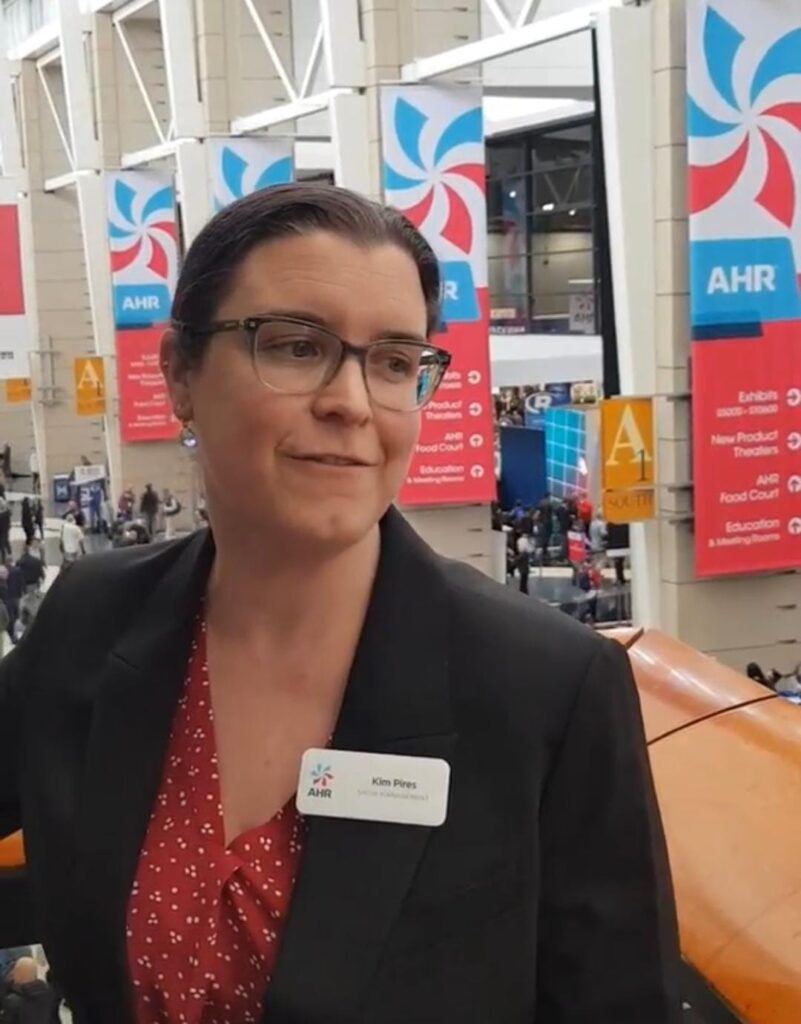
Joining the conversation, Kimberly Pires, Special Projects Manager, International Exposition Company, which owns and operates the AHR Expo, said: "We are excited about the turnout at the 2024 HR Expo in Chicago this year. The crowds filled the aisles, and the education sessions were super exciting. We are proud to have one of our biggest seminar programmes, featuring free seminars and innovation awards. I am especially proud of our innovation award submissions this year. We donated USD 25,000 to a local tech school – for high school students considering entering the industry. So, we are trying to promote our workforce development, because they are the industry's future, and we want to bring them in and help them feel the excitement. One of the objectives behind the AHR Expo is to bring people together, help them feel that community, and know that it’s here for them. And well over the decade, we have gone from being exhibitors on the show floor to being a lot more than that, like how the education programme has grown. Now, more organisations are participating in and giving seminars and sharing their knowledge and the technologies they have been working on."
Furthermore, she discussed the workforce development programme and said: "It has been a new realisation that we need to invest in the industry's future, or else it will die out. Thus, we have to rise to the challenge and see new products, new service technicians and ways that we can improve their innovation."
In the past decade, Pires said, innovation awards have gained prominence, with a particular focus on emerging topics. This year, she added, one of the hot topics is artificial intelligence (AI), which is evident on the show floor and in our education programmes. "Many exhibitors are embracing AI, recognising its significance for the future,” she said. “While it's still a relatively young field, it's becoming unavoidable, and we are featuring it prominently in both our exhibition and educational initiatives."
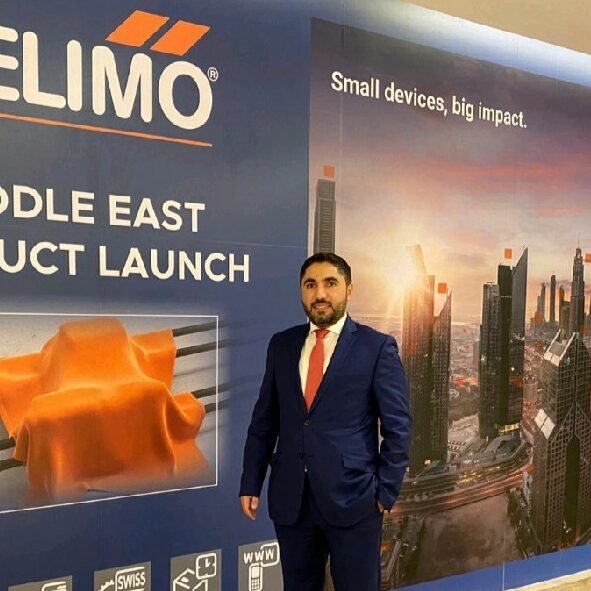
Echoing some of the points by Pires, Ali A. Jaradat, Regional Head of OEMs – Middle East, Belimo, and one of the visitors to the Expo, said he was attending the show out of curiosity to see the customers who are exhibiting or visiting. “Moreover, we have our booth, and I look forward to exploring more products to gain knowledge about innovation, especially in the context of digital transformation within the HVAC industry,” he said.
During the Conference, ASHRAE also highlighted its Learning Institute and said that ASHRAE Learning Institute (ALI) now offers 18 courses, including:
- Starting the Path to Net-Zero Buildings Using ASHRAE 90.1-2022
- Understanding ASHRAE Standard 241 Control of Infectious Aerosols – Background, Overview, and Key Requirements
- V in HVAC – Health and Energy Improvements Using the Indoor Air Quality Procedures
- Is Your Building Ready? Applying ASHRAE Standard 241 Control of Infectious Aerosols – Facility Assessment, Planning, and Implementation
ASHRAE said all registered attendees of the conference, both in-person and virtual, will have access to the virtual conference platform during the conference and 12 months post-conference. Furthermore, ASHRAE said the 2024 ASHRAE Annual Conference will take place from June 22 to 26 in Indianapolis, Indiana, in the United States and that the 2025 Winter Conference will take place from February 8 to 12, 2025 and the AHR Expo, from February 10 to 12, 2025, in Orlando, Florida, in the United States.
Understanding ASHRAE Standard 241
The recently released ASHRAE Standard 241 Control of Infectious Aerosols is a road map for mitigating the spread of pathogens in the built environment. Climate Control Middle East spoke to a cross-section of stakeholders on the new Standard at the Expo. And here is what they had to say…
Chris Ahne, Vice President - Sales, Genesis Air, Inc.
“I believe ASHRAE Standard 241 will greatly benefit our industry, especially in the face of the global pandemic. Many were unprepared to manage buildings and ensure employee safety. Standard 241 provides excellent guidance on making buildings safer, offering criteria for enhancing safety through building design.

“As a manufacturer, we appreciate the specification of conditions for providing equivalent clean air. A valid test method for rating our product's removal or inactivation efficiency of challenging microorganisms in buildings, especially during infectious modes, allows us to test our products accordingly. This lets us demonstrate to designers and end-users that our products align with Standard 241.
“Including appendices detailing how to achieve equivalent clean air, based on product types – such as particle filters or air-cleaning devices – is valuable. The appendices reference specific test methodologies, like ASHRAE Standard 52 and others. Currently, limited standards apply to existing products, prompting our active participation in committees to develop new standards. This effort aims to expand the application of air-cleaning technologies, adding them to the list of accepted test methods for validating product efficiencies.
“It's crucial to clarify that some manufacturers claiming their products are '241 certified' may be misleading. Standard 241 is not a certification standard for products; it’s a building design standard. Product certification should be based on recognised standards, like ASHRAE Standard 52, ISO standards or AHRI standards, ensuring that products meet the criteria outlined in ASHRAE Standard 241.”
F.C. Wiser III, President, Dynamic Air Quality Solutions
“The comparison between particles in indoor and outdoor air is a critical aspect, especially when determining the amount of outdoor air and its associated costs. Extensive research had already been conducted on these factors before the onset of the pandemic. It wasn't that we were caught off guard; rather, there was a reluctance to accept the findings, leading to a deviation from established practices.
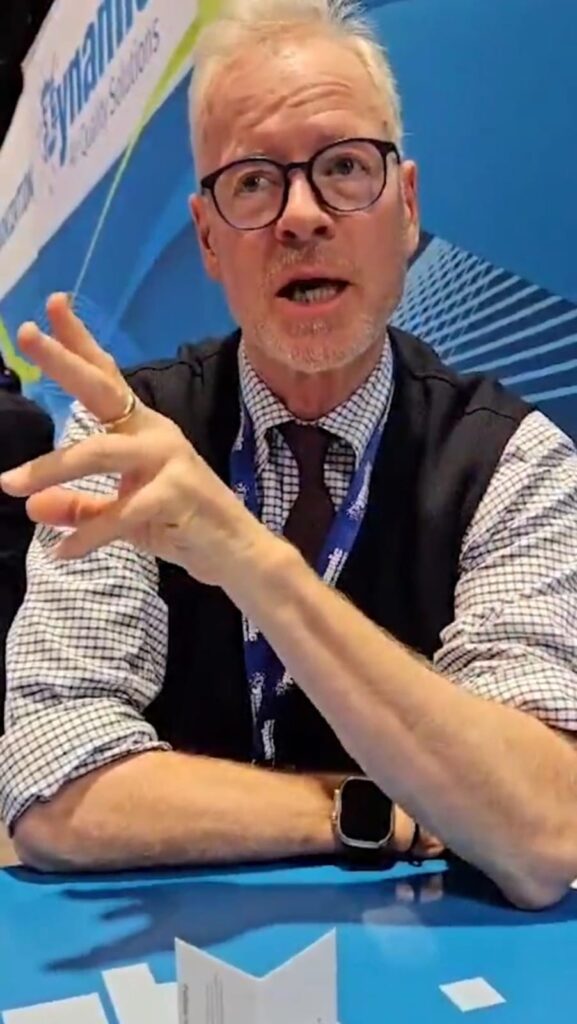
“In March or April 2020, an engineering firm approached me, intending to release a statement dismissing the significance of airborne transmission in buildings, suggesting that it wasn't a real concern. I advised against publishing such an analysis, emphasising that there was a clear connection between airborne transmission and the virus. It was essential to recognise that buildings play a role in the movement of airborne particles.”
Stephen Yurek, CEO and President, AHRI
“I think people are evaluating the intensity or interest in the subject. Interest spiked during the pandemic but has since decreased. However, it still persists, particularly in commercial spaces. Examining ASHRAE Standard 169 for testing methods to assess these claims is crucial. We'll be working with ASHRAE to explore potential methods.
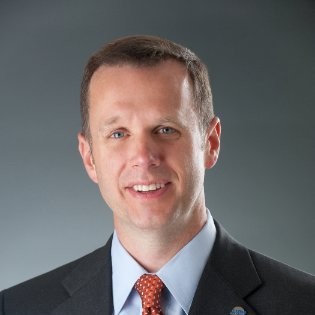
There's also the question of market acceptance. Will people pay a premium for a certified or standard-compliant product? This remains unknown. We frequently write standards with ASHRAE and assess certification programmes. Sometimes, manufacturers express the need for a certain standard, but the market may not share the same interest. Engaging with building owners, managers and associations to gauge interest is essential, especially considering the multitude of certification schemes, like USGBC’s LEED and others in the market.”
Understanding the Global Cooling Pledge
The Global Cooling Pledge, which emerged as one of the key outcomes of the COP28 Summit that concluded in December 2023, provides an opportunity to commit to sustainable cooling with concrete actions, considering that it aims to raise ambition and international cooperation through collective global targets to reduce cooling-related emissions by 68% from now to 2050, significantly increase access to sustainable cooling by 2030 and to increase the global average efficiency of new air conditioners by 50%. What inspiration can the HVACR industry draw from the Pledge? We at Climate Control Middle East spoke to a cross-section of stakeholders at AHR Expo 2024 in Chicago, and here's what they had to say.
Varun Pahwa, President, Desiccant Rotors International (DRI)

“Decarbonisation is gaining momentum as a prominent theme. I believe it is crucial for manufacturers, designers and application teams to maintain a strong focus on the intrinsic carbon footprint of specified and used products, and the operational carbon emitted during the manufacturing process. Additionally, considering the energy consumption in the ongoing operations of all products is essential, given its direct correlation to government policies. Across all these aspects, there is a need for being very conscious regarding our carbon footprint. This aligns well with the challenges our industry is currently facing.”
Stephen Yurek, CEO and President, AHRI

“It seems like the pledge attempts to catch up to the industry. The HVACR sector has been a leader in sustainability and climate change within the industry. We were instrumental in driving initiatives, like the Montreal Protocol and the Kigali Agreement. Over time, we have consistently pursued new technologies to enhance sustainability, reduce energy consumption, and minimise carbon emissions in our products. This involves strategies such as reducing the size of heat exchangers and other innovations, reflecting our long-standing commitment to overall sustainability. The Pledge, in essence, serves as a means to communicate this story to consumers and the wider public, showcasing the industry's ongoing efforts in these technologies.
“The Pledge aims to ensure that individuals, worldwide – whether in North America, Europe or elsewhere – have access to affordable, efficient, and life-saving cooling and heating and water heating technologies. It underscores the industry's readiness to bring forth innovations and technologies developed by manufacturers. The challenge lies in waiting for market signals and readiness from consumers, building owners and homeowners to adopt these technologies. The urgency to educate is crucial, emphasising the need to convey the availability of these technologies to the public. Manufacturers are ready to sell products that deliver sustainability, but market awareness and consumer understanding are essential to drive the adoption of these technologies.
“While aspirations set goals, bringing the market and consumers along with those aspirations is essential. The Pledge plays a role in creating urgency and educating the public. For instance, when replacing a water heater, the focus should shift from replicating the same technology to installing a heat pump water heater. Similarly, opting for an air-to-water heat pump instead of a boiler in heating systems can contribute to sustainability. Choosing a system with high efficiency and an environmentally friendly refrigerant is crucial in cooling. The Pledge aims to foster a sense of urgency in educating consumers, ultimately driving the adoption of sustainable technologies.”
Daniel Becker, Export Department, Full Gauge

“As a manufacturer producing controllers for refrigeration, we must be responsible. Our responsibility is to supply customers, OEMs and manufacturers with controllers capable of handling new refrigerants. This involves incorporating inverter or proportional controllers into the new equipment, resulting in cost reduction, lower maintenance expenses and a positive impact on global warming. Working with environmentally friendly refrigerants, such as hydrocarbons or CO2, allows us to achieve efficiency comparable to traditional options without adversely affecting the environment.
“We offer customers and OEMs products equipped to handle these advanced refrigerants, featuring new functionalities that ensure compressors operate efficiently without unnecessary energy wastage. The manufacturer's primary obligation is to provide technologies aligned with these requirements. We understand the necessary steps and must integrate them into our products, offering verbal outputs, cost-saving features, economic setpoints and energy management software. We aim to empower customers and OEMs to maximise their efforts in saving money and reducing costs.”
Luis Ojeda, Product Manager, Onicon
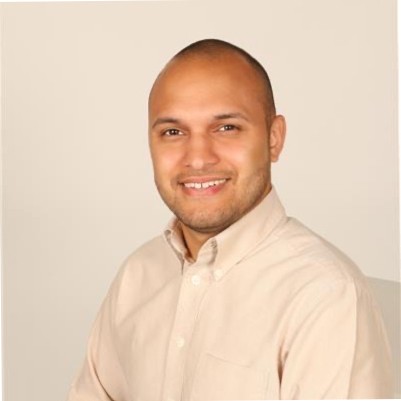
“We are committed to deliver the highest measurement accuracy to our customers. Our devices provide measurements in terms of the percentage of the reading, not the percentage of the full scale. This means that our accuracy remains unaffected by variations in flow rates.
“We aim to offer optimal accuracy, enabling individuals to comprehend their buildings and systems better. This, in turn, aids in reducing overall CO2 emissions and carbon production costs.”
Tim Eorgan, Carlisle HVAC

“Our primary goal is to reduce the energy footprint of buildings, whether residential or commercial. One of our key strategies involves sealing ductwork comprehensively, employing robust and specialised sealants. These sealants are applied between the panels, creating a balloon system that maximises the efficiency of the duct system. When the HVAC system is in operation, whether dispensing cool or warm air, we strive to ensure that the maximum amount reaches its destination through grilles. The objective behind the sealant is to transform the duct system into an airtight vessel. The generated hot or cool air remains conserved within the network when the HVAC system is activated. This ensures efficient distribution, whether to the back bedroom in a residential setting or various conference rooms and offices in a commercial building.”
Q&A
‘Maintaining separate standards makes it challenging to conduct effective surveillance’
Surendar Balakrishnan of Climate Control Middle East caught up with Steve Yurek, President & CEO, AHRI, to discuss a diverse range of topics concerning the HVACR industry. Excerpts from the interaction…
Is there a timeframe we can establish to being aggressive in addressing climate change? How can we speed up the process of manufacturers responding to the need for more sustainable cooling solutions?
Manufacturers have the capabilities and abilities to respond. They are waiting for the market signals and the cues in the market to indicate that it's ready for purchase. They have sufficient capacity to manufacture and have developed the supply chains and technology necessary. The urgency and ability to act exist; however, the need is to educate Americans about the availability of these products. Manufacturers can then sell these products into the marketplace, delivering sustainability. It is about bridging the gap between aspirations and actions. Aspirations set the goals, and everyone is striving for them. The challenge is bringing the market and consumers along with these aspirations. The aim is to make them understand that adopting eco-friendly options is essential. For instance, when replacing a water heater, the choice should be a heat pump water heater, different from the same old technology. Similarly, in heating systems, opting for an air-to-water heat pump is more sustainable than a boiler. For cooling, the focus should be on systems that are efficient and use environmentally friendly refrigerants. The Global Cooling Pledge aims to create urgency and contribute to the education piece. Manufacturers are ready with products, but there needs to be demand, and creating that demand involves educating consumers about available options and possibilities.
We have SEER 24, but it comes with a certain cost. You spoke about affordability, but the cost of the capital equipment, the cost of spare parts are factors that are almost like impediments when it comes to market acceptance. But at the same time, going to my earlier question about the need for speeding up the process, is there some sort of market mechanism that can be introduced to bridge the gap between affordability and the cost of, say, R&D and everything that is going into product development to achieve SEER 24? The world is perhaps waiting for action akin to leapfrogging and making sure we are getting closer to the kind of energy efficiency that we need to make a profound difference in how we respond to the 1.5 degrees C goal.
It would be great if we had that solution; you and I would be very rich. Figuring out how to make something affordable for everybody is crucial. In the US, various initiatives have been put in place through acts of Congress, such as the IRA (Inflation Reduction Act), aiming to address affordability issues.
The challenge lies in the first-cost difference between current technology and newer, more efficient, sustainable technology, making it accessible for people below the upper 20% or even 50%. One approach is reducing equipment costs, considering higher efficiencies often involve more expensive materials like copper and aluminium. Therefore, finding ways to lower manufacturing costs is essential to establishing a more reasonable price point. Additionally, exploring new financing mechanisms becomes crucial, enabling those who can't pay outright to afford it over the equipment's lifespan. This might involve innovative approaches or subsidies, similar to the tax credits and rebates implemented through the IRA, aiming to assist consumers in reducing the overall cost. However, more than relying on tax credits or rebates might be required, prompting the need to explore alternative financing methods to make sustainable technology affordable for everyone.
And when you speak to manufacturers, what is the message you are receiving?
I mean, they are all committed to it. But they're also dedicated to ensuring, as I said at the beginning, that they have sustainable but cost-effective solutions for everyone. What we are talking about is not like an automobile going from gas to an EV or other things seen as luxuries. Heating, cooling and hot water are life necessities, essential for a productive, safe and healthy life. It is crucial to ensure that everyone, from the poorest to the richest, has access to this technology. Providing options and continually raising the bar is essential. While leapfrogging would be great, it would require significant financing to make it affordable for people. Instead, taking steps and gradually raising the bar makes things more accessible. Simultaneously, it is vital to reduce the environmental impact of equipment and ensure essential heating, cooling and refrigeration persist. It is not a one-time leap, but a gradual process aligning with market affordability, all leading towards long-term goals like those for 2030, 2040 or 2050. This encourages ingenuity and diverse solutions not only for product development but also for successful selling and financing.

Being realistic about goals is essential. The 2050 goals set the vision, but it's crucial to consider what can be achieved by 2030 to significantly reduce environmental impact and get products in use. During this period, we can learn, develop new technology, and set the stage for the next steps in 2030, 2035 or 2040. As we approach net-zero, the cost increases exponentially. It is important to figure out how to lower this peak, making the transition more affordable while maintaining environmental sustainability.
I want to speak on AHRI’s role in the Middle East. There is a call for region-specific testing and certification mechanisms in the Middle East, and towards that end, you have established sub-committees. You are engaging stakeholders in the Middle East and trying to get their feedback. How is that progressing, and what is the next step? Are we going to see region-specific testing in a more profound way? Do you have a timeline for it?
It’s progressing. AHRI’s MENA region office was established right as COVID was coming in. My last trip, pre-COVID, was in March of 2020, as I was flying back from Dubai and establishing the main office. Between then and today, significant progress has been made in increasing the representation of the Middle East and North African HVACR industry and manufacturers. As you mentioned, we have established a region-specific standards committee to regionalise standards for the Middle East and North Africa due to their unique climate zone needs. With that, we have been successful in working with and will continue to do so with other product categories to have a more cohesive and harmonised policy in the GCC region.
Looking at the existing diversity in systems and labels within the region, such as Kuwait, Saudi Arabia, UAE and others, we have worked on harmonising these standards. I can't recall the specific product category off the top of my head, but one of them is moving towards a common labelling scheme. We plan to continue these efforts. Additionally, we signed an agreement with the GCC region to explore the development of a lab in the MENA region for testing our equipment. Initially focused on residential and light-commercial sizes, the lab will expand based on demand from manufacturers. This approach aims to address the challenges posed by shipping over long distances, as seen during COVID and recent regional conflicts. Regarding timelines, particularly for the lab, it involves developing a business case with the GCC region, securing funding and the actual construction, making it unlikely to be operational by the end of this year. Despite the challenges, we are working to progress as quickly as possible.

As the president and CEO, I often express ideas, assuming they can be implemented swiftly. However, the reality unfolds when we engage with the staff and other stakeholders. They affirm their commitment, saying, "Yes, we can do this."
Specifically regarding the lab, the initial step involves developing a comprehensive business case with the GCC region. Subsequently, we must strategise funding and navigate various logistical considerations. The entire process, from planning to actual construction, will undoubtedly take some time. While my ideal scenario envisions having the lab up and running by the end of this year, the likelihood of achieving that goal may be limited. Nevertheless, we are actively working towards making it happen as swiftly as possible.
I am interested in knowing more about the timeline. You spoke about harmonising of standards. What has been the initial response to that?
It has been exceedingly positive. The harmonised standards and labels have proven beneficial for market surveillance, ensuring that products sold and installed align with the region's and respective governments' energy and climate goals. The realisation has set in that maintaining separate standards makes it challenging to conduct effective surveillance and to verify the correctness of products. Moreover, the unified approach reduces costs, directly addressing the concerns raised earlier. Having multiple certification, labelling and reporting schemes and standards complicates product design and testing for smaller markets and increases overall costs. A consolidated approach, catering to a larger market, results in reduced costs for everyone, making these products more affordable and allowing for a more robust push towards sustainability.
I would like to discuss the global movement towards refrigerant transition. Are we having headwinds in the form of building codes? Europe has gone ahead and allowed 500g of refrigerant charge, in the case of R-290. What is happening here in the United States? Or, would such a move come up against building code?
Building codes and safety standards, often overlooked, play a crucial role, especially as we transition from higher-GWP refrigerants to lower-GWP ones. The challenge lies in lower-GWP refrigerants being more volatile and dispersing more quickly due to their reduced atmospheric lifespan. Our focus has been keeping international safety standards, and constantly updating them based on new research and information. These safety standards are then integrated into building codes, a process that takes time to effect change.
Safety standards, including ISO and ICC standards, are drafted by industry experts, while building codes involve various stakeholders, such as fire marshals, building owners and insurance companies. Achieving approval for A2Ls (lower charge) in safety codes in the United States took considerable time, but we've made substantial progress, with most states now fully A2L-compliant. Approval for higher charge faces more significant challenges, especially considering potential litigation. Incremental steps are essential and gradually expanding to commercial refrigeration. Building expertise among technicians, building owners and others is crucial. While progress may not match Europe's pace, a steady approach will lead to adopting more efficient and safer refrigerants for heating and cooling applications.
So, would you say Europe took a slightly different approach?
Yes, Europe has taken a more aspirational and aggressive approach toward these initiatives. Each country has its unique considerations, and the United States tend to be more cautious, particularly concerning safety and legal aspects, compared to Europe. It’s not about being less safe; rather, the differences in systems and regulations make the United States' approach more cautious.
In the United States, a robust legal system and concerns about liability, especially when introducing flammable refrigerants into occupied spaces, contribute to a slower pace. The stringent legal framework aims to avoid potential accidents with high liability costs for companies. Europe, with a somewhat less litigious system, can move more swiftly.
While Europe's positive experiences may serve as valuable lessons, the United States will likely proceed cautiously, considering its legal and safety landscape. The education and adoption process may be slower in the United States compared to the European Union.
(Climate Control Middle East would like to acknowledge and appreciate the support and assistance of ASHRAE, AHRI and the International Exposition Company in enabling the gathering of information during the twin events.)

